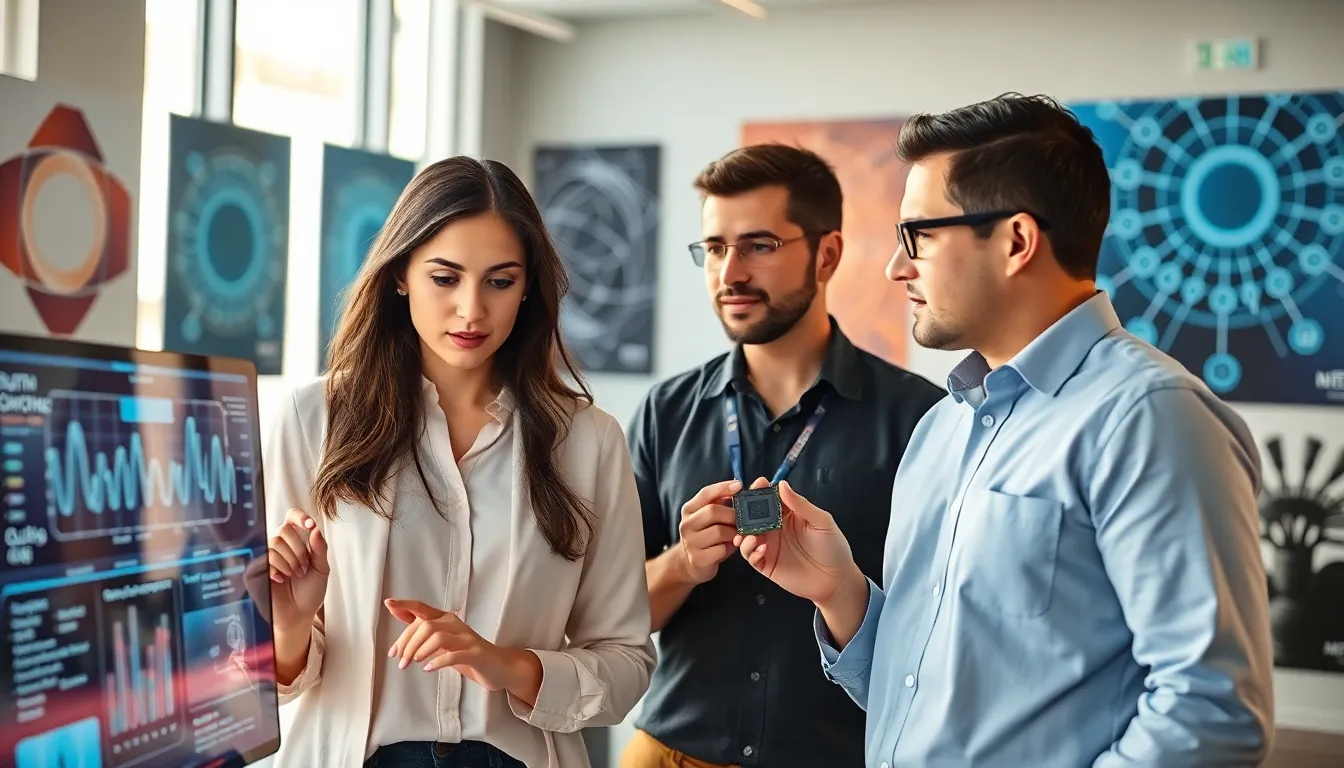In a world where technology evolves faster than a toddler throwing a tantrum, computing innovations are at the forefront of this dizzying change. From quantum behaviors that bend the laws of physics to devices that learn your habits better than your significant other, the landscape of computing is transforming in remarkable ways. If you think your smartphone is revolutionary, just wait until you see what’s cooking in the realms of advanced computing. Buckle up as we jump into some mind-blowing examples of these innovations and what they mean for our future.
Table of Contents
ToggleRevolutionary Hardware Innovations

Quantum Computing
Quantum computing is not just some buzzword thrown around by tech enthusiasts: it represents a paradigm shift in how we process information. Unlike traditional computers that use bits as the smallest unit of data, quantum computers rely on qubits, which can exist in multiple states at once. This capability allows them to solve complex problems faster than any supercomputer in existence. For example, they could analyze vast datasets for pharmaceuticals or crack encryption codes we once thought unbreakable.
Neuromorphic Computing
On a different front, neuromorphic computing mimics the human brain’s neural architecture. This innovative approach allows machines to process information in a way that’s more similar to how humans think, potentially paving the way for much more advanced artificial intelligence. Imagine devices that can learn and adapt in real time, responding to changes in their environment without extensive programming. While still in its infancy, neuromorphic technology may redefine the limits of machine learning.
Biometric Authentication
Biometric authentication has rapidly replaced traditional forms of security. Gone are the days of remembering complex passwords that you end up writing on a sticky note. With the rise of facial recognition and fingerprint scans, users can now unlock devices and gain access to sensitive information with a simple touch or glance. This innovation not only enhances security but also streamlines user experience, making technology more accessible for everyone.
Artificial Intelligence Advancements
Machine Learning Applications
Machine learning is a subset of artificial intelligence that allows systems to learn from data and improve over time. It’s used in everything from recommendation systems for Netflix to predicting stock market trends. Businesses can leverage machine learning to analyze customer behavior and tailor their offerings in real time, providing a level of personalization that was previously unimaginable.
Natural Language Processing
Besides, natural language processing (NLP) enables computers to understand and respond to human language. Tools like chatbots and voice-activated assistants are everyday examples of NLP in action. These systems break down language barriers, allowing for seamless communication across cultures. As NLP technology improves, we can expect even more intuitive interactions between humans and machines.
Edge Computing
Edge computing is poised to revolutionize data processing by shifting it closer to the data source. Instead of relying heavily on centralized data centers, edge computing processes data locally on devices like IoT sensors and smartphones. This reduces latency and improves performance, essential for real-time applications such as autonomous vehicles and smart cities. End users will benefit from faster responses and less downtime, making technology more efficient.
Blockchain Technology
Blockchain technology, often synonymous with cryptocurrencies like Bitcoin, extends far beyond digital currency. Its decentralized nature ensures a secure, transparent, and immutable ledger of transactions. Businesses can use blockchain for everything from supply chain management to secure contracts. More importantly, it can democratize data ownership, offering individuals greater control over their personal information. As industries adopt blockchain solutions, the potential for innovation continues to grow.
The Rise of Internet of Things (IoT)
The Internet of Things (IoT) refers to the interconnected network of devices that communicate and share data with each other. From smart home devices to industrial sensors, IoT is everywhere, making our lives significantly more convenient. This connectivity allows for automation and remote management, transforming industries such as healthcare, agriculture, and manufacturing. Even though its benefits, challenges in security and data privacy remain, as more devices become connected.
Social Impact of Computing Innovations
Ethical Considerations
With great power comes great responsibility, and the rapid advancements in computing innovations raise critical ethical questions. Issues like data privacy, algorithmic bias, and environmental impact cannot be ignored. As AI and other technologies become more integrated into our lives, society must carefully navigate these challenges to ensure that progress benefits everyone. Engaging various stakeholders in discussions about ethical standards can lead to more responsible innovations.
Future Trends in Computing Innovations
Looking ahead, several trends are set to shape the future of computing. Technologies such as quantum networks and integration of AI into everyday devices will create new opportunities for innovation. Sustainability will also play a significant role in how computing evolves. As organizations focus on reducing their environmental footprint, greener technologies may emerge. The future is bright, but it requires collaboration and visionary thinking to seize these opportunities.


